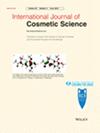While modern industry advancements have expanded nail beautification options, scientific literature primarily focuses on nail biology and medicine, with limited attention on cosmetic treatments. This study aimed to investigate human nail denaturation properties, including gender impact, blending nails to enlarge the sample pool, nail sensitization through bleaching, and active effectiveness testing. The objective was to understand the DSC and bending fatigue relationship, and define the consumer relevance of the DSC test.
Nail clippings were collected from adult female and male volunteers. The wet DSC was employed to validate sample preparation, explore the effects of gender, and assess the potential of using blended nails for claims substantiation testing. Nails were sensitized through bleaching using hydrogen peroxide. The effects were confirmed through DSC and nail flexure tests. Furthermore, the ability of actives to address concerns related to nail softness and brittleness was assessed using these techniques.
The results confirmed the viability of equilibrating nails in water for up to 14 h as a standardized testing method. The denaturation temperature results were independent of gender and suitable for claims substantiation testing. Blending nails from different sources did not yield significant variations in denaturation properties. A preliminary study suggested that cadaver nails should be used with caution because they exhibited differences in denaturation temperature, influenced by the sampling location. Bending fatigue tests highlighted the significance of humidity, with higher humidity conditions (80%) enhancing nail flexibility and providing better resolution for claims substantiation.
Sensitizing the nails with hydrogen peroxide induced alterations in both DSC and bending fatigue results. Proof-of-principle studies demonstrated an elevation in denaturation temperature and a decrease in the number of cycles to break, indicating a nail-hardening effect when formaldehyde was applied. The use of a nail softener led to an enhancement in nail fatigue resistance due to a notable reduction in nail crosslinking density.
The measurement of crosslinking density proved to be a sensitive tool for assessing the effects of cosmetic treatments on nails, particularly in predicting outcomes related to nail brittleness and flexibility.



